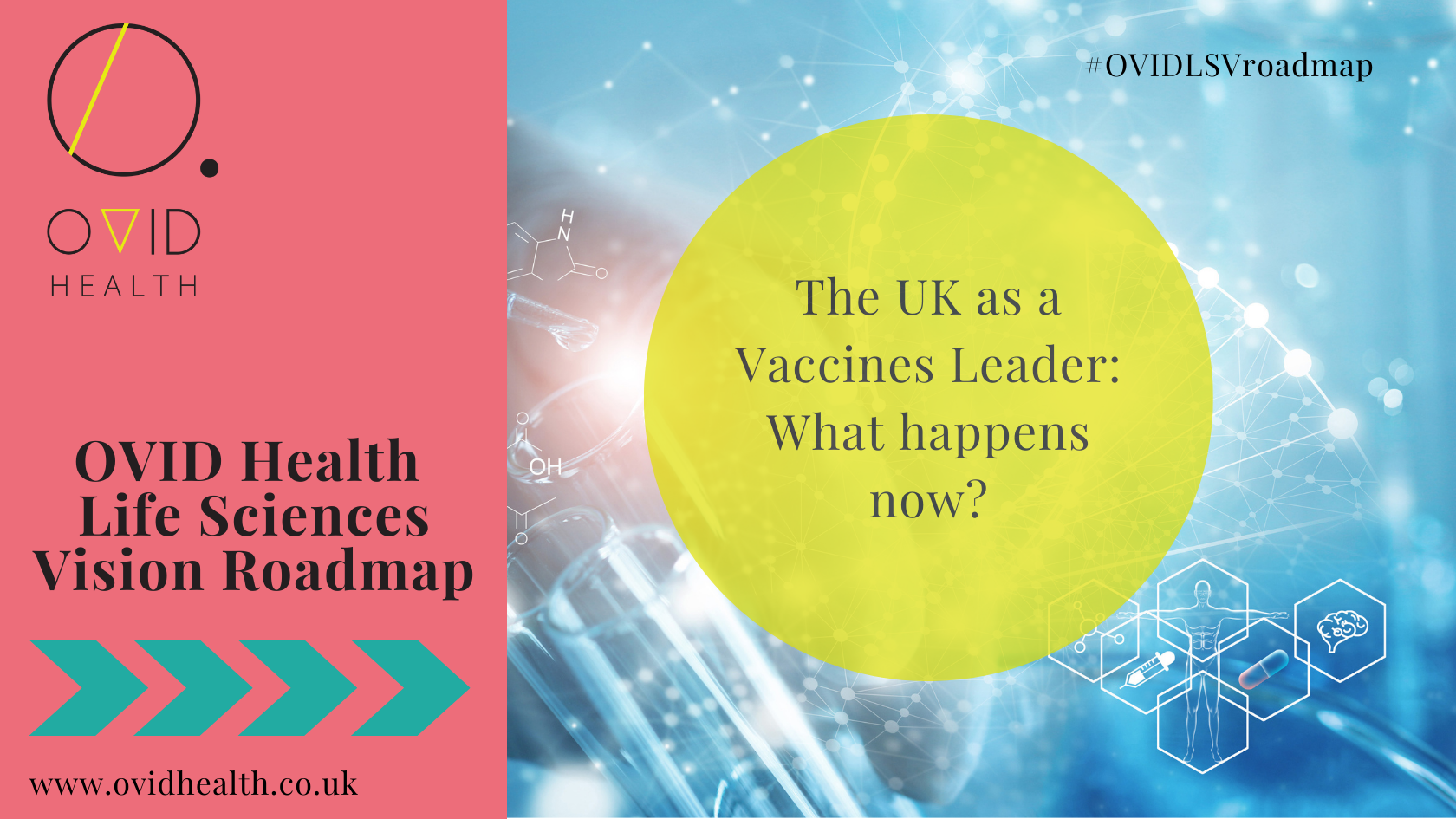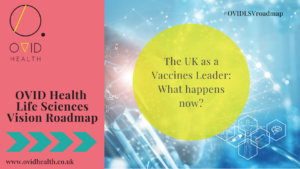
14 Jul The UK as a Vaccines Leader: What happens now?

July 14th was the timetabled release date for the Life Sciences Vision Roadmap – the delivery plan was due to set out funded activity for this spending review cycle to deliver on the Life Sciences Vision’s “great healthcare challenges”. Political circumstances have shelved the policy document but not the challenges it seeks to address. OVID Health Associate Director, Cameron Miller, shares his analysis of what the Roadmap needed to contain on vaccines.
After the Taskforce
The Life Sciences Vision Roadmap was due to set out how the UK can sustain a leading position in novel vaccine discovery development and manufacturing. This fell under a wider theme of building on the new ways of working from COVID-19 to tackle future disease missions.
So, has the UK really taken on board the lessons learnt during the pandemic and what does it mean for vaccines and vaccine manufacturers?
One of these things is not like the others
Until COVID-19 ground the world to a halt, it had been accepted that it can take ten years to develop a vaccine. That landscape has shifted. We have seen that vaccines can be developed, manufactured and deployed at rapid pace to protect vulnerable populations. While not every novel vaccine will work at the same pace as when there is a global pandemic to address, has the experience altered the way we approach managing that process including how we roll them out and how we talk about them?
The Life Sciences Vision was right to be ambitious about vaccines. There are now vaccines being looked at in areas we would never have considered in the past, including cancers and Alzheimer’s. But these will challenge the existing hegemony of how we assess their value and wider societal impact.
Mission moonshot
The UK Vaccines Taskforce is undoubtably a true success story of the Covid-19 pandemic. This group of experts – created and backed by Government – coordinated an accelerated pipeline from “picking winners” for investment, to scaling clinical trials, procuring and manufacturing sufficient numbers of vaccines, and supporting roll out alongside a clear communications strategy. The Vaccines Taskforce showed it was possible for two large Government departments, multiple arms-length bodies and industry experts to be agile and nimble.
To replicate this nimbleness and desire to excel, the Life Sciences Vision Roadmap ought to ensure the entire system is joined up, placing decision making with the right stakeholders at every stage. For example, the Joint Committee on Vaccination and Immunisation (JCVI), makes recommendations to the Secretary of State on immunisations for the prevention of disease, and those recommendations should be implemented wherever practicable. However JCVI is not even mentioned in the Life Sciences Vision, and there is no attempt to see how it fits with these wider goals and objectives or if it needs further support or a broader purpose.
Lessons learnt?
The Vaccine Taskforce’s great lesson was taking procurement out the hands of the procurement department and placing it into those of strategic decision makers tasked with saving lives. The UK ordered a significant number of vaccines during the pandemic because it knew the importance of diversification. A review of tendering for childhood and other vaccines in light of the need to give security of supply sufficient weighting would have been eminently sensible in the Life Sciences Vision Roadmap.
Marking their own homework
There was an element of inevitability in the Government’s desire to anchor its life sciences strategy in its flagship pandemic success story. But these are the issues vaccine manufacturers are looking at right now. The path to success will be paved by a whole system approach; commendable during a global pandemic, essential for the long-term too.
To find out more about OVID’s take on the Life Sciences Vision healthcare challenges and how to deliver them, check out our series here.